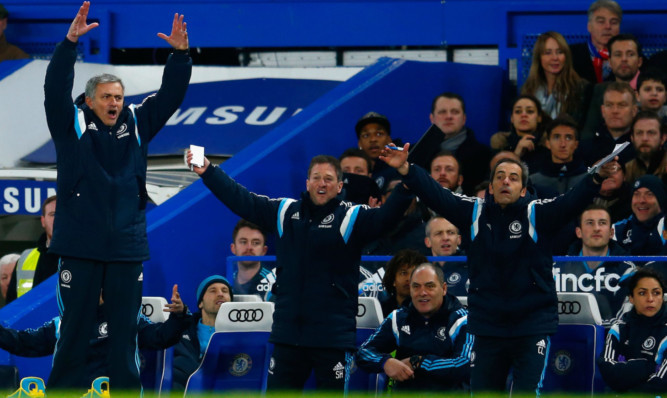Donald Colman. Heard of him? No? Prior to a bit of diligent research (Googling), neither had I.
For those of you not au fait with Aberdeen Football Club 1903 to 2015, Mr Colman was their manager in the 1920s. Well, actually, they hadn’t started calling them managers, boss, gaffer or Special One by then. Trainer sufficed.
He didn’t take the Dons to Gothenburg. He didn’t take them to a title. He didn’t even take them to Hampden. But he was a bit of a ground-breaker, all the same. Literally.
Because it was Colman who came up with the idea that he would be better off watching his team at Pittodrie from a pitch-side hole in the ground. Thus the dug-out was born.
Colman wanted to be next to the action, but he didn’t want to get wet.
So it’s his fault.
His fault that when Everton played Aberdeen in a friendly a few years later they transported the concept to England and everybody wanted one.
His fault that managerial descendants chose to spend more time out of the hole than in it.
His fault that Fifa, in their utter madness, agreed that getting out of the bunker was a good thing, decided that coaches should be encouraged to take a more active part of the game, painted a few white lines, and called it a technical area.
His fault that these few white lines created the prowling, snarling, gesticulating manager.
His fault that the fourth official was spawned.
His fault that Alan Pardew head-butted a player.
His fault that Jose Mourinho poked a Barcelona coach in the eye.
His fault that social media became as interested in Arsene Wenger struggling with the zip on his over-sized coat than what was happening on the pitch.
His fault that the touchline is now the Wild West of a football stadium where chaos reigns.
And on Tuesday night at Stamford Bridge it was at its lawless worst.
The fourth official could actually be a worthwhile component of a game of football. If he was used as another set of eyes for the referee, that is. Spotting incidents like Diego Costa’s stamp on Emre Can which took place all of three yards away from him (Phil Dowd), for example.
That’s not what happens though. The fourth official’s primary occupation is keeping warring managers apart and engaging in constant dialogue with one, the other, or both. Not to mention putting up with all the hangers-on, like Mourinho’s odious little sidekick Rui Faria, who want to have their say as well.
Jody Morris is the assistant under-18 coach at Chelsea, does a bit for Chelsea TV and is about as far removed from the first team tactics board as Boris Johnson is from Her Majesty (there’s a Johnson great-great-great-great-great-great-great-great-grandfather descended from a German prince, did you know).
But whose head should be popping up behind Mourinho’s shoulder a couple of rows back in midweek? None other than a bearded Morris.
From what I can gather, Jody was on his best behaviour and kept his seat, but there were plenty of others who showed less restraint and sprung out of their padded and heated chairs when the Costa-Can incident started.
I have every sympathy for Dowd. No wonder he missed it. He would have unquestionably been distracted by the mayhem around him, rather than concentrating on seeing the German-Spanish tangle to its studs-in-ankle conclusion.
Dowd and his fellow touchline monitors have to have heads on a swivel, not to look at the four corners of the pitch, but to make sure a manager’s translator isn’t calling out the opposing team’s masseur.
Three things need to happen. Limit the number of people in the dug-out, or whatever passes for one, to the manager, one assistant, a physio and the substitutes. Get the turps on to those white lines, and pretend that the words “technical” and “area” had never been conjoined. And if anyone takes more than a step out of their domain, send them back for the first offence and send them to the stand for the second.
The extent to which managers have become distracted by the fourth official’s presence and their addiction to engaging him was encapsulated by Mourinho in extra-time.
There was Jose missing his team scoring their winning goal because he was too busy haranguing Dowd.
Over 40,000 people in the stadium and millions watching in their living rooms saw Chelsea score. But the manager didn’t.
He may have derived some peculiar satisfaction out of getting what he thought about Lucas not being red-carded off his chest.
But he didn’t have a clue how Liverpool were marking at set-pieces after a couple of late substitutions, how his team had exploited a new weakness, and how they could possibly do it again.
That’s not just skewed priorities. It’s failing to do your job properly.
When Mr Colman got a dug-out built at Pittodrie it was with the purpose of giving him a better appreciation of, and quicker reaction time to, what was happening on the pitch. Not to create a stage to preen, provoke and pressurise.
Some of us wish he had just stayed in the stand.
